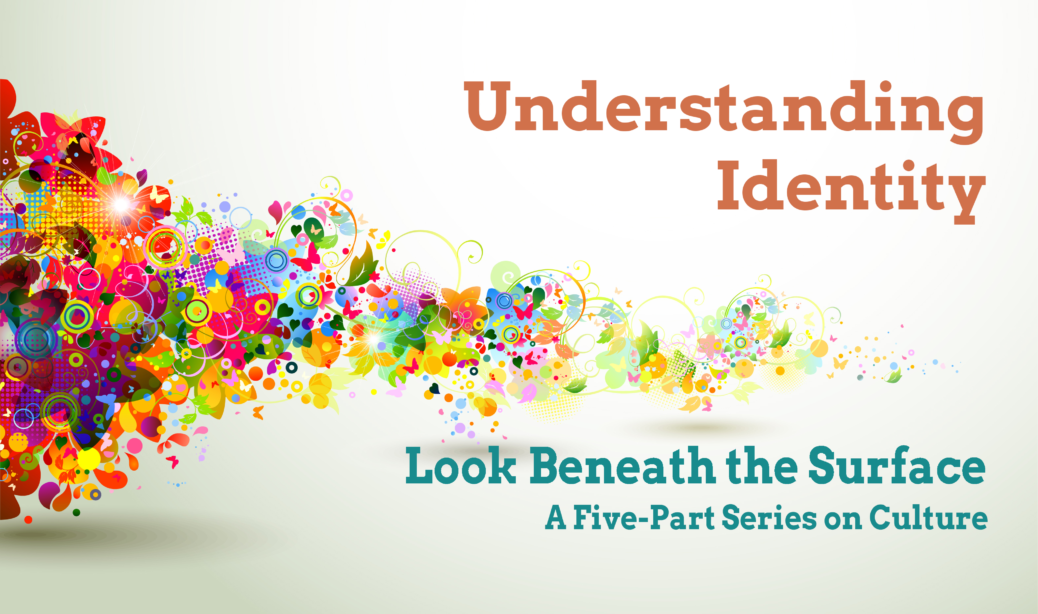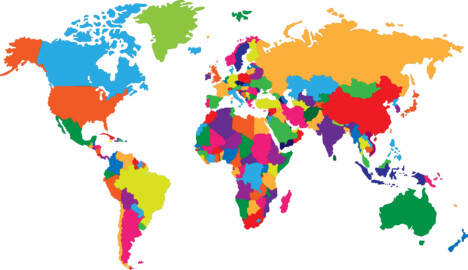Dr. Mooney continues to unpack the major invisible dimensions of culture as part of the September five-part series, “Look Beneath The Surface.” This week illustrates how vital it is to understand the ways identity influences your students’ thoughts and behaviors in the classroom.
Understanding cultural differences begins with realizing that the differences exist. So often, well-intentioned teachers say, “I treat all my students the same. I don’t see color.” Although they tend to be referring to race when making this statement, it applies to many other differences as well. Educators recognize that students have different learning styles, ability levels, and motivations for learning, but sometimes other types of differences can be pushed to the side.
This may be because we do not realize that our view of the world is not the same as everyone else’s. We each wear a pair of cultural glasses that colors the way we see life. These glasses develop as we are acculturated into society through interactions with our family and friends and are made from the invisible dimensions of culture I discussed last week.

Often, we don’t even realize we wear these glasses because the people we interact with the most are wearing a very similar pair. As part of our daily life, we talk with those around us to understand current events and discover that except for minor variations, we are interpreting events in the same way. We feel this confirms that our interpretations are real and valid, and our glasses are more firmly affixed!
However, engaging in cross-cultural communication can show us that the view from our cultural glasses is not the only way of seeing the world. When we interact with someone who shares a view we don’t understand, we may be tempted to believe they are wrong. “They just aren’t seeing this event, or this area of society, correctly.”
Is it possible that humans interpret societal events incorrectly? Absolutely! It happens every day. A witness believes that the porch pirate was a young man in a green car when the actual thief was a young woman with short hair in a bluish gray car. We cannot always trust what our physical eyes see, just as we cannot correctly interpret all of life from our one set of cultural glasses.
If we could take off our glasses and put on someone else’s, we might realize that looking through their glasses reveals a world we could not see through our own.
What does the world look like through other cultural glasses? If we’re all humans, in what ways can our glasses possibly differ?
Identity
Our concept of ourselves—in relation to the rest of society—is one way every culture views life differently.
Some cultures value independence highly and believe that an individual’s identity is separate from others. The individual or nuclear family is the smallest unit of society. They contend that an adult should be able to take care of themselves and not overly rely on others for support. Individual rights and freedoms are paramount.
These cultures are known as Individualist.
In contrast, some cultural groups believe that identity is derived from associations with other groups. The in-group or extended family is the smallest unit of society. You are who you are because of the group you belong to, and what is good for the group is good for you. Each in-group protects their own. They value harmony and avoid direct confrontation.
We refer to these cultures as Collectivist.
Please note, those descriptions are not boxes in which to put cultures or people. They simply identify opposite ends of a continuum that researchers found to describe the general beliefs of various cultures. Culture A may be more individualistic than Culture B, but not as individualistic as Culture C. They are relative to each other. Additionally, no one culture or person identifies completely with the description in all areas of life. In many cases, a person’s reaction depends upon the context.
In the classroom…
By and large, Americans are more individualistic than collectivist. Public health mask mandates in recent months have demonstrated this clearly when a portion of people do not want anyone dictating whether they wear a mask in public or not. Americans cling tightly to the value of independence. We even fought a war over it almost 250 years ago!
English Learners in your classroom may come from more collectivist cultures. As a result, they may not enjoy competitive games where they work on their own to see who is best. They may prefer group projects that allow them to work with their friends to learn new content or to accomplish a task.
Students from collectivist cultures may not understand your aversion to plagiarism. You view copying another’s writing without giving credit as cheating. Through your glasses, it seems the plagiarizing student is not receiving the maximum educational benefit if they do not do their own independent work. However, the collectivist student and their family may see the situation differently. They feel that everyone in the family is in this educational endeavor together and doing work for the child or copying the work of others is both a way to support the in-group and to honor those who have demonstrated excellent work in the past.
What do you do?
Do you allow the student to plagiarize their next essay or their family to complete the project for them?
No, not necessarily. That would be doing them a disservice because the U.S. educational system is built upon individualistic values. However, you can be understanding. You can realize that their cultural glasses are likely different from your own, and you can work to explain the differences to them. Help them to understand how plagiarism is viewed in this culture and how they can avoid it.
What about those individualistic activities in the classroom? Perhaps you could also replace some of those competitive games with cooperative ones or allow more opportunities for students to work productively together in class.
If your identity is rooted in individualism, you don’t have to change who you are to interact with those who are more collectivist. But, you are wise to recognize their cultural glasses color the world differently than yours, and you must demonstrate value and respect for the differences.
Next week…
Dr. Mooney points out how the ways people understand and adjust to the demands of time can make or break communication across cultures.










Comments are closed.
[…] dimensions of culture we have talked about so far—identity and time—do not operate independently from each other. For example, most Americans lean toward […]
[…] miscommunications are the result of not understanding the invisible dimensions of culture. We all wear our cultural glasses that we acquired by living in our home culture, and as we look through our glasses to view the […]